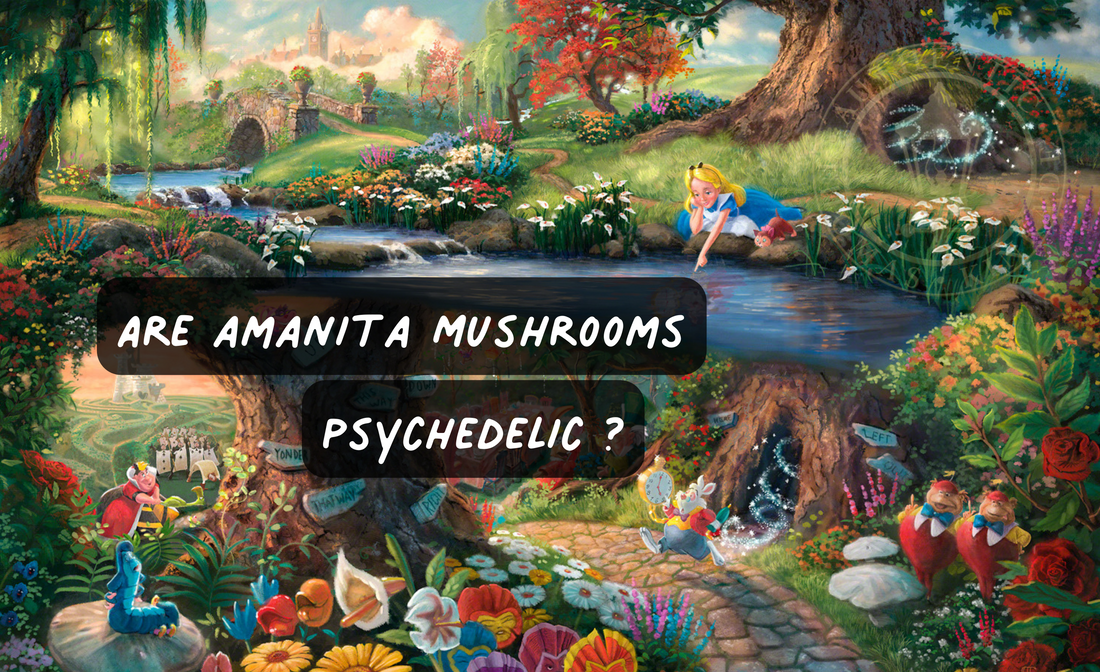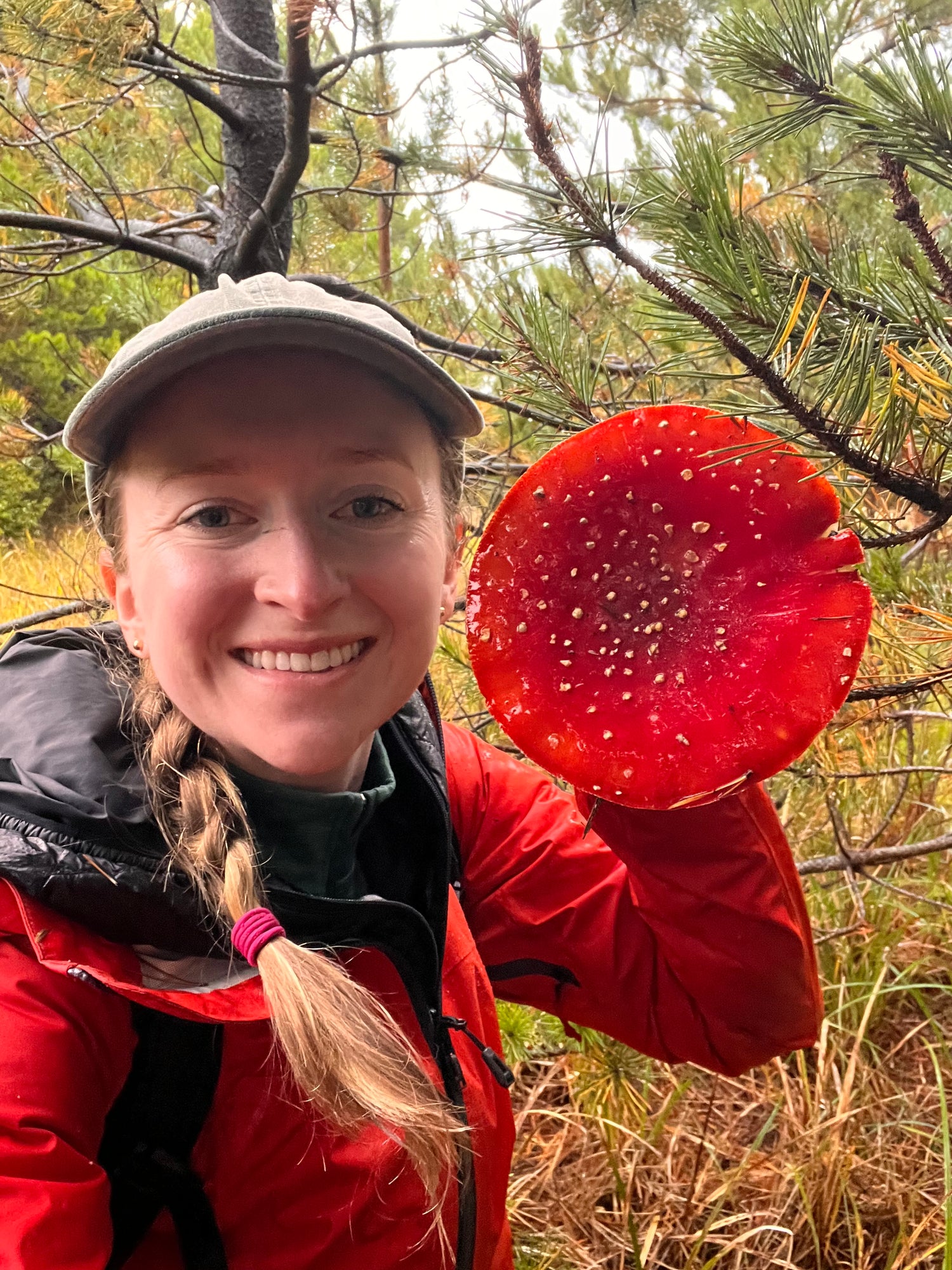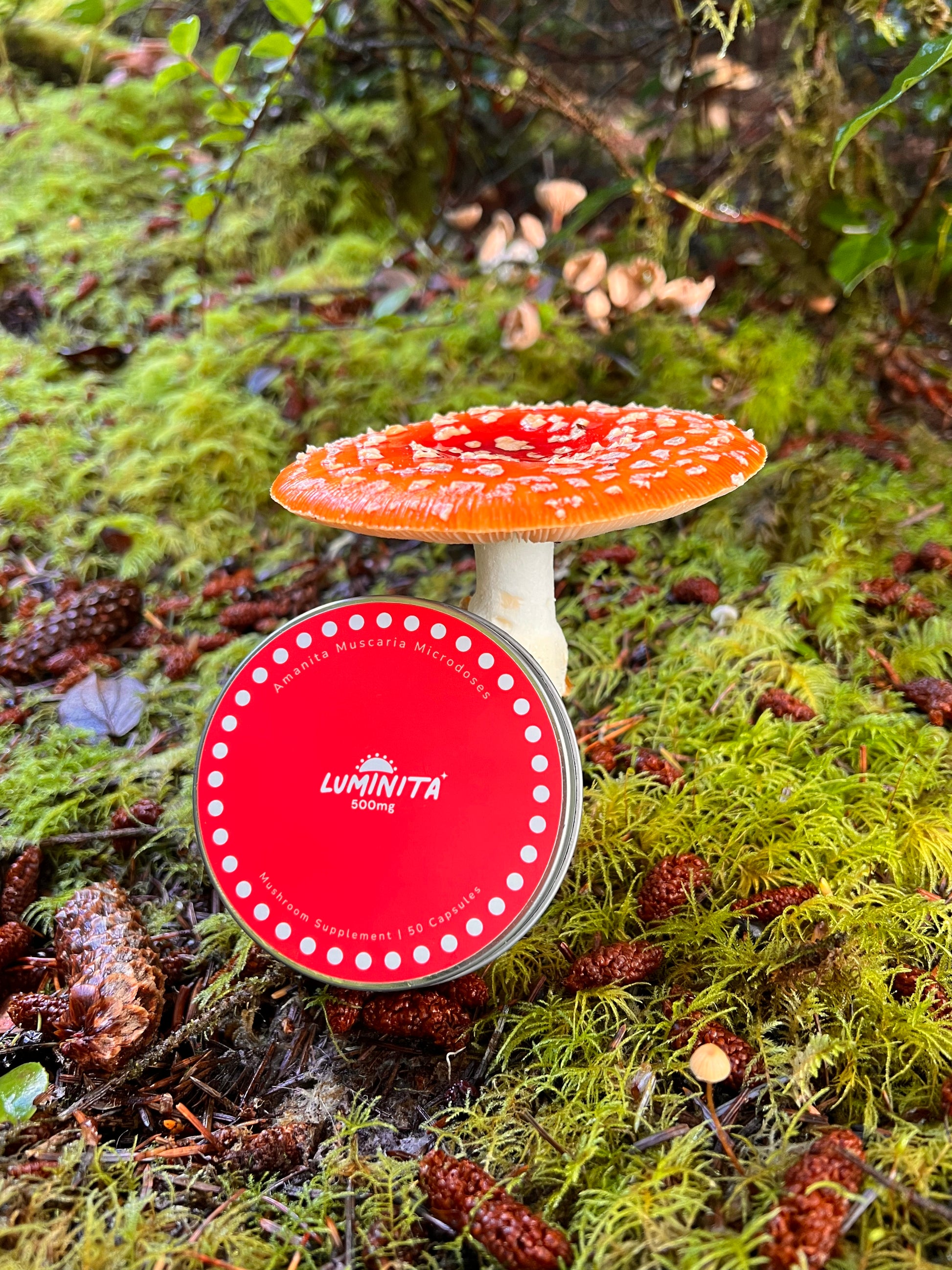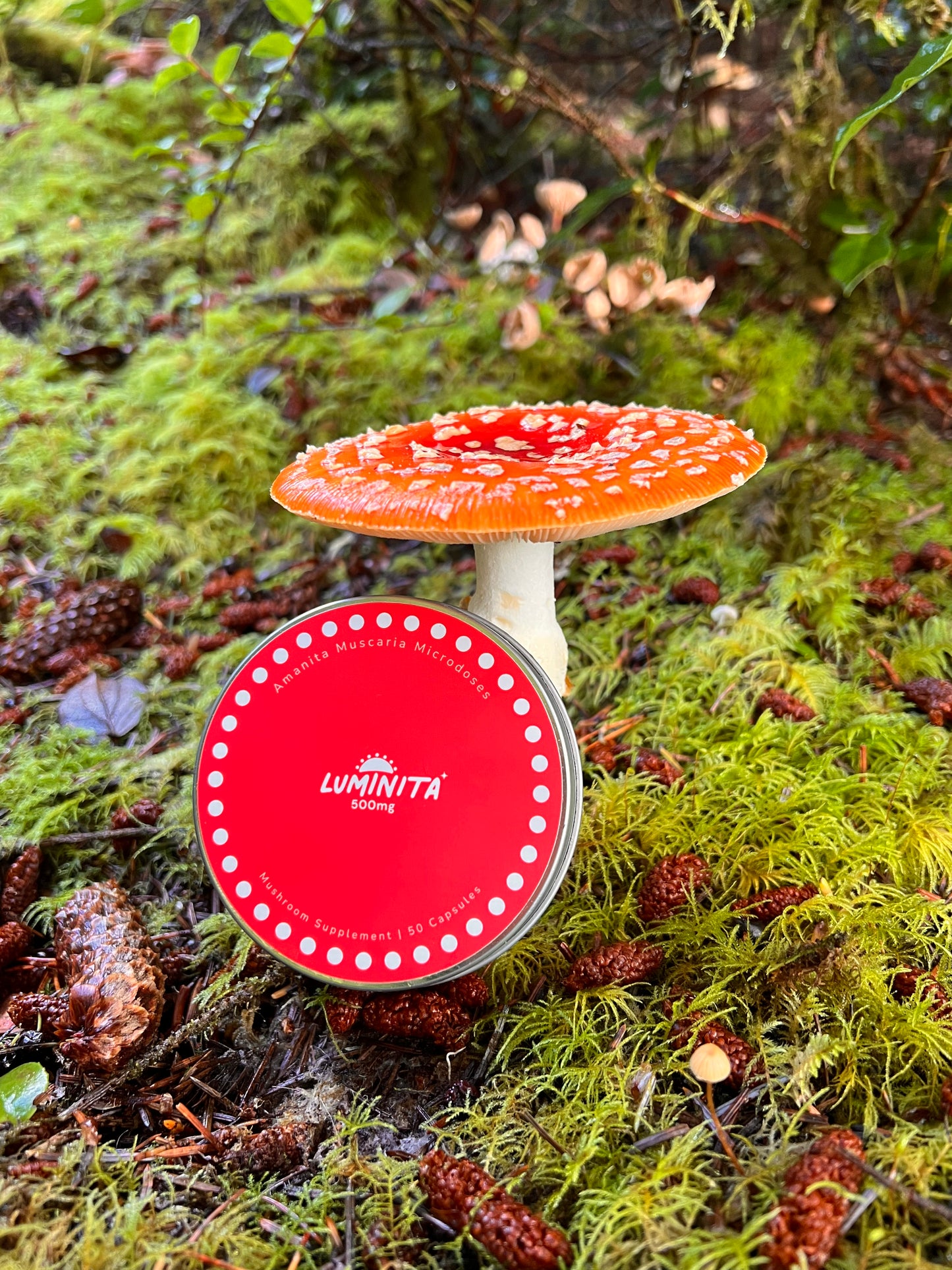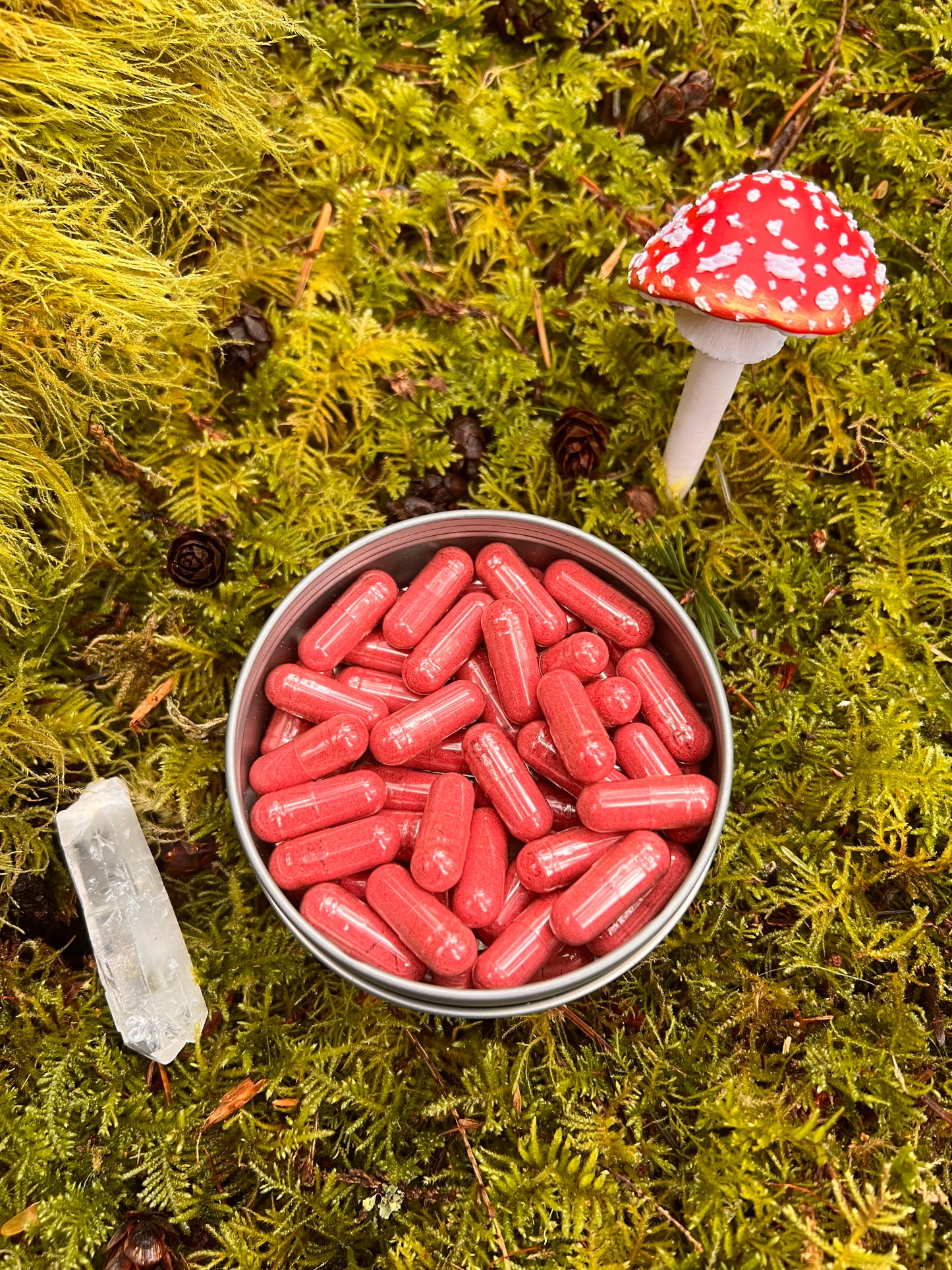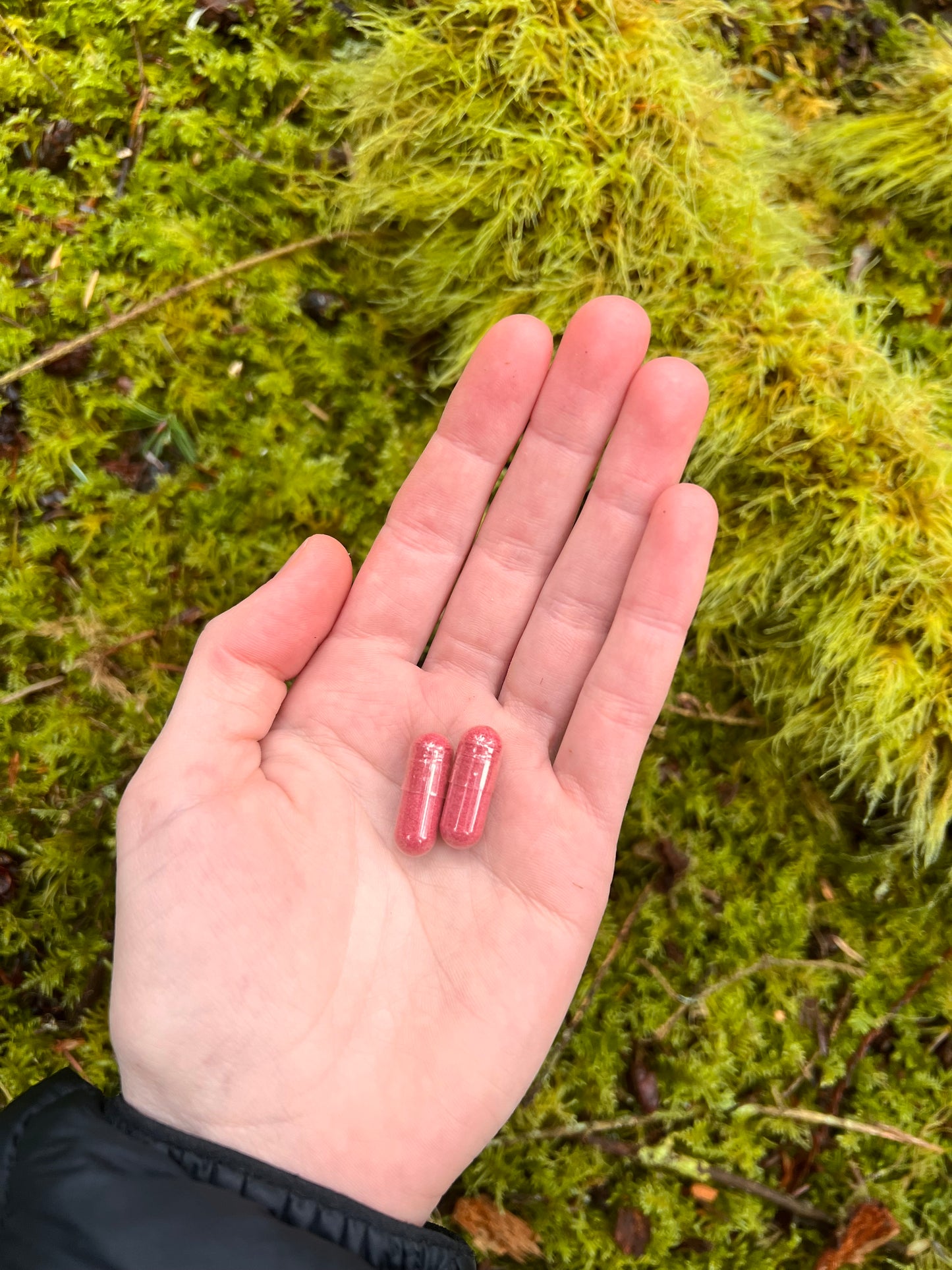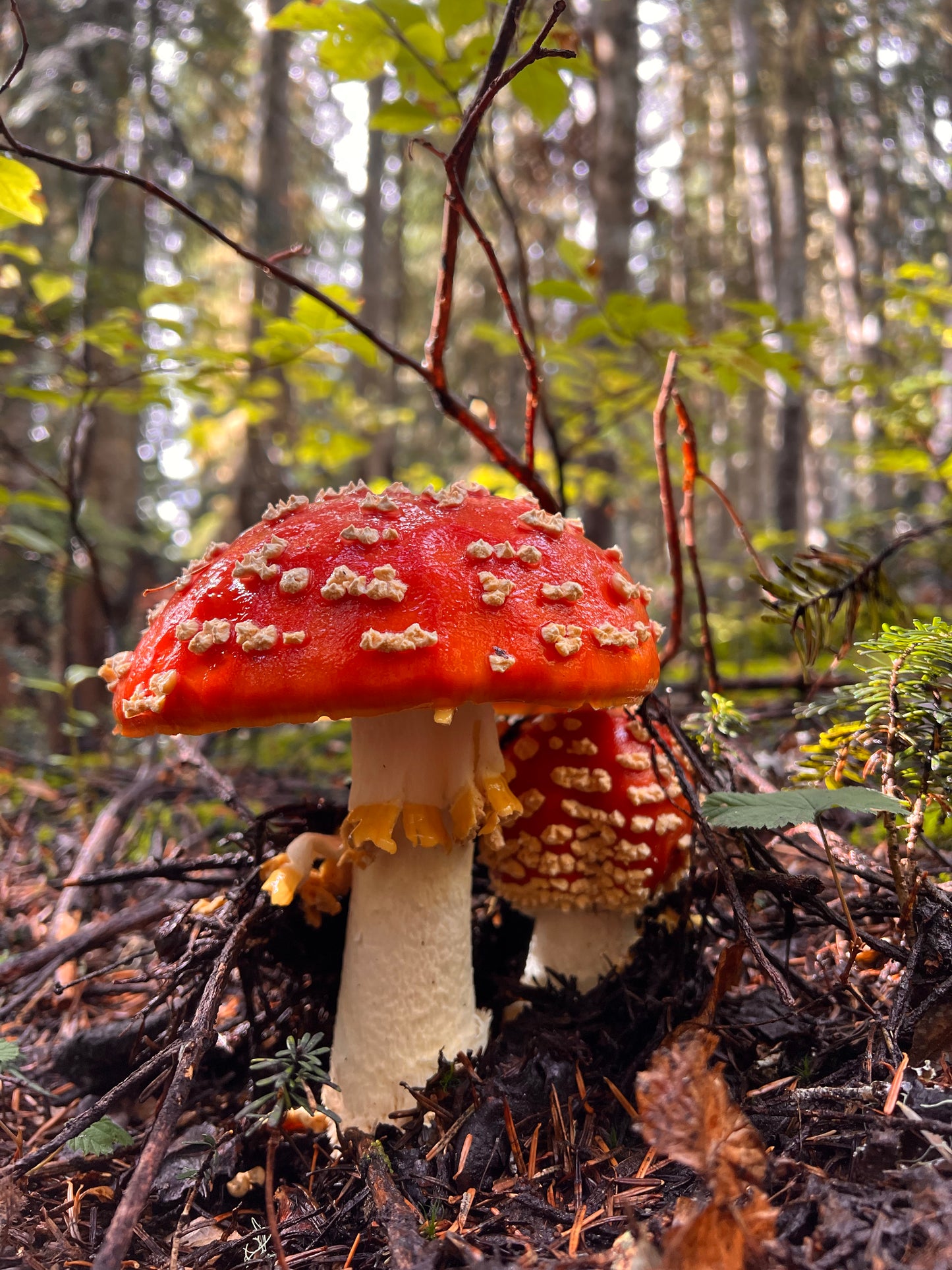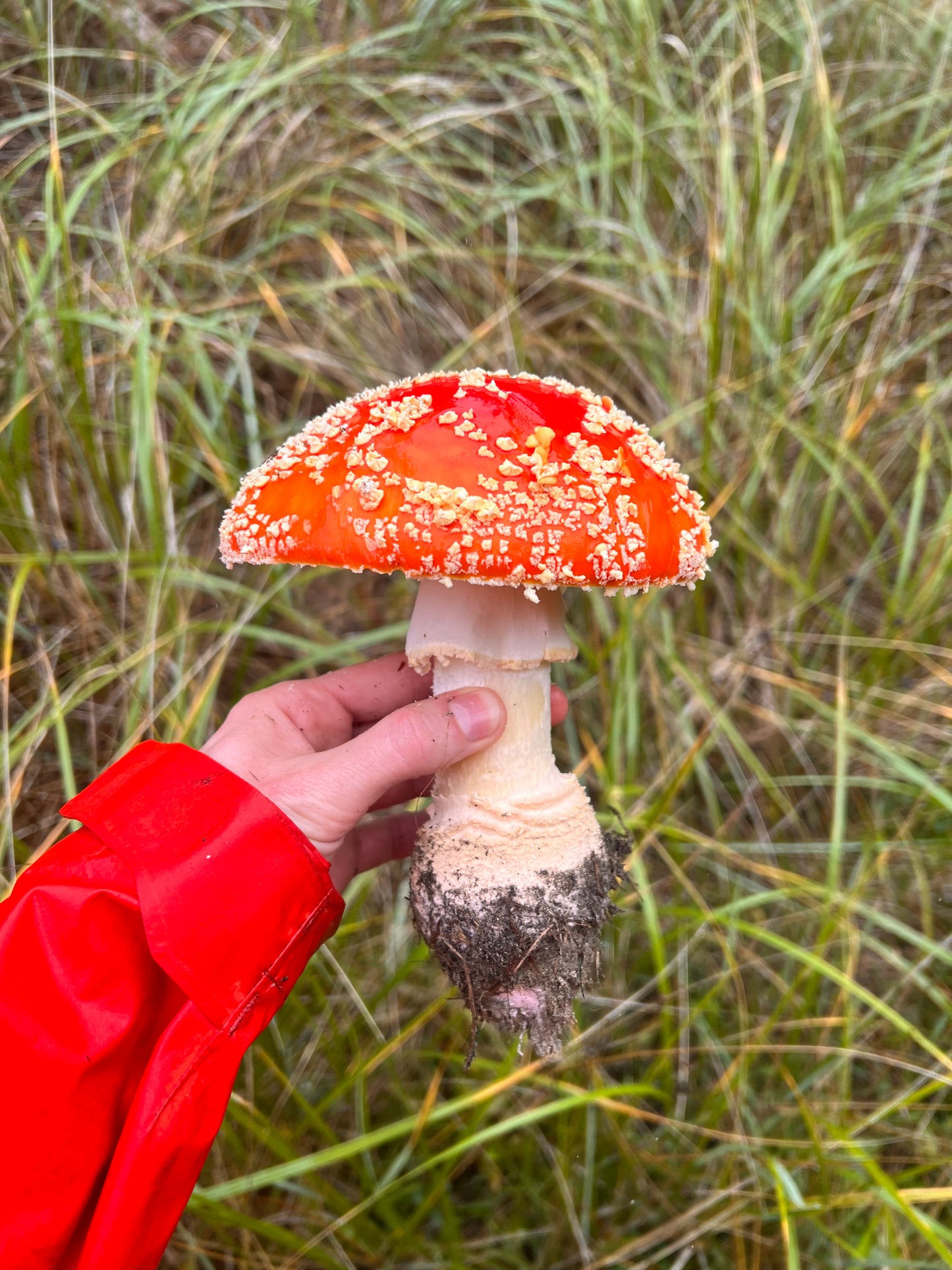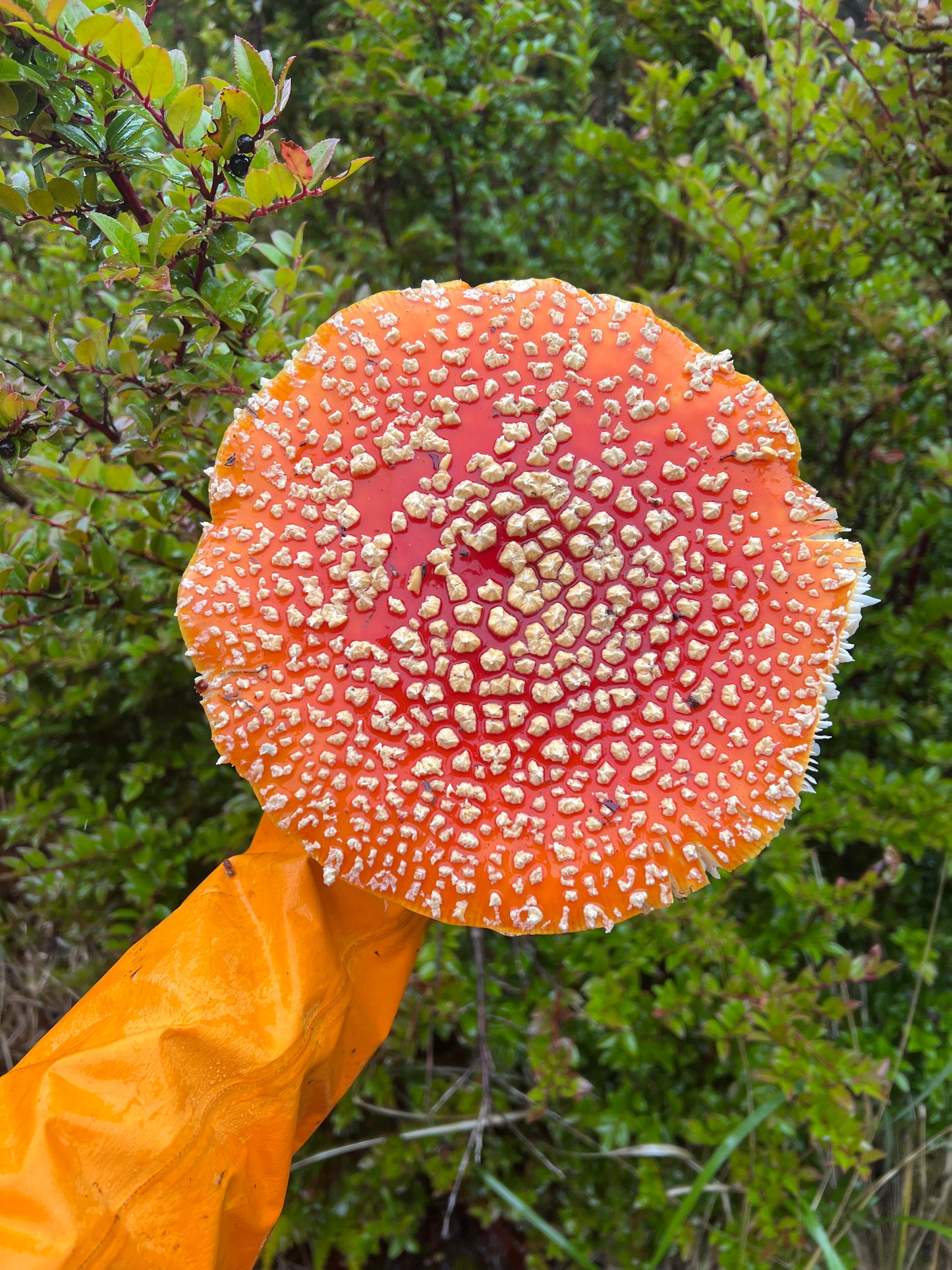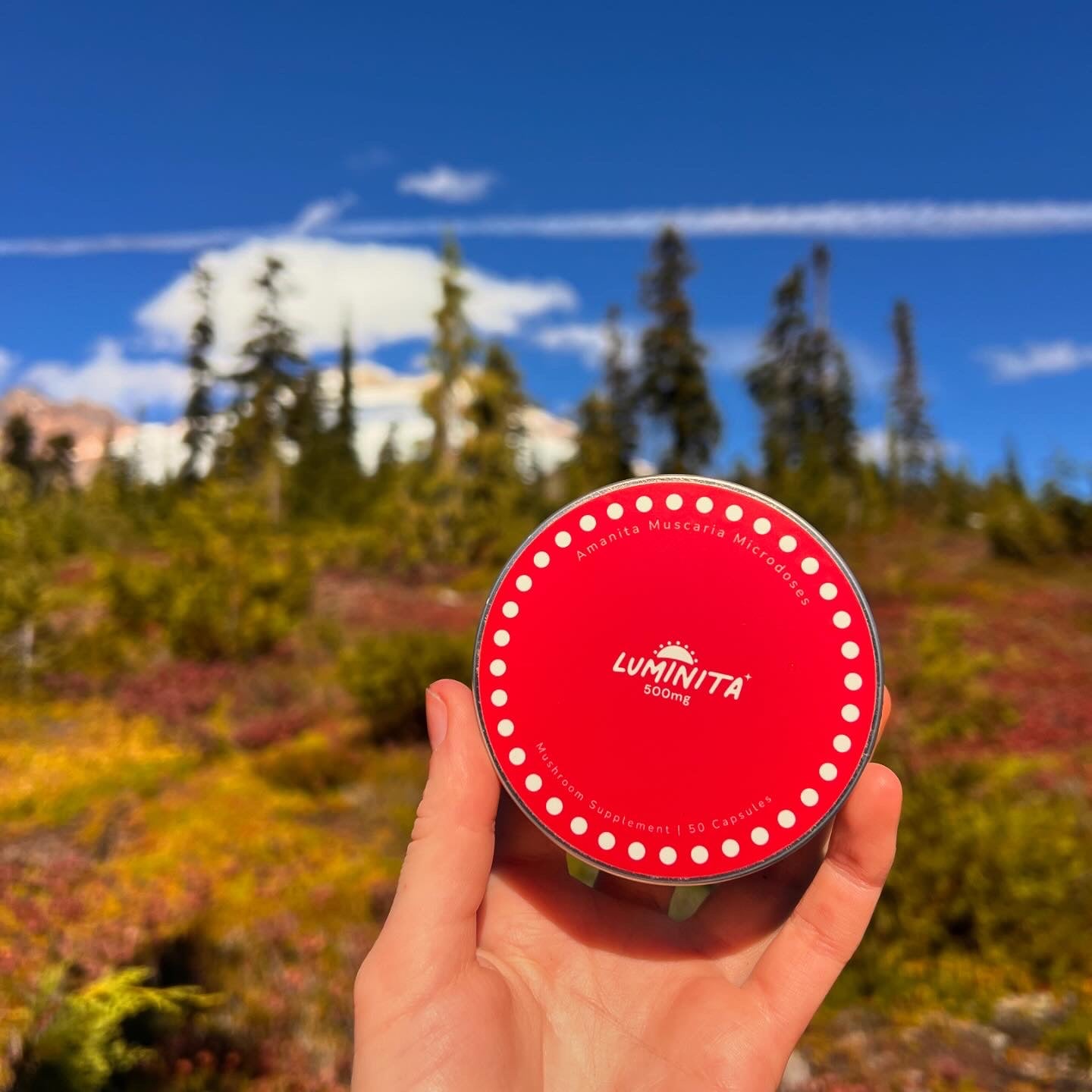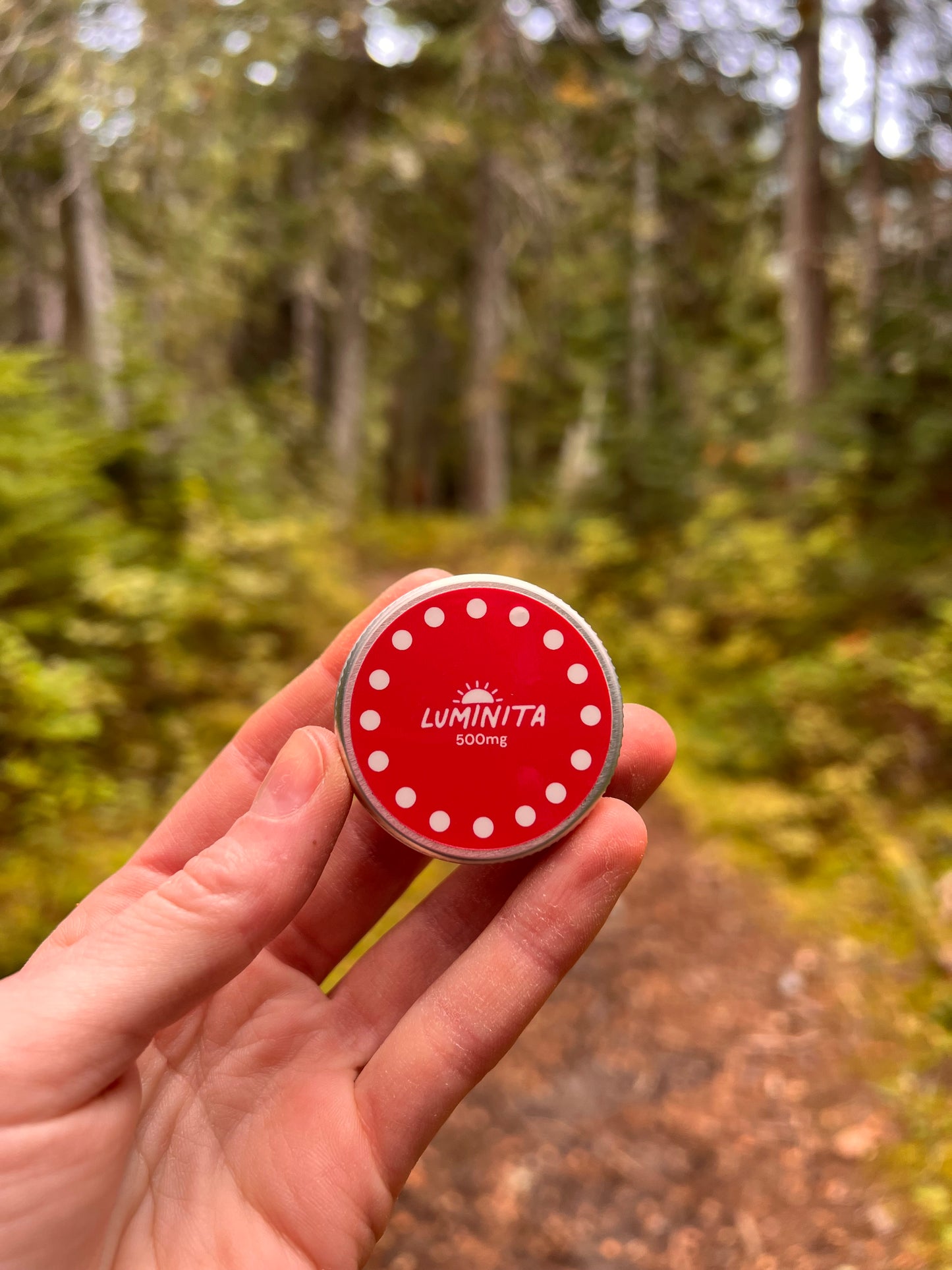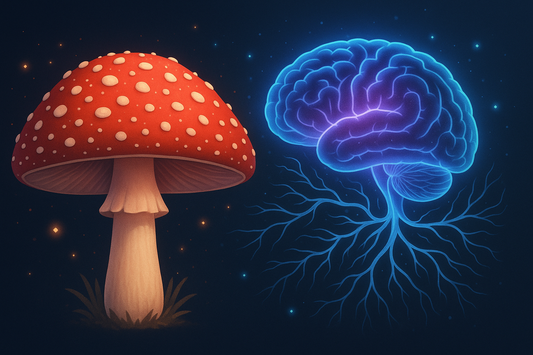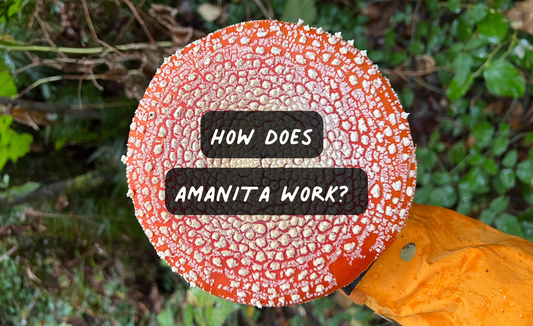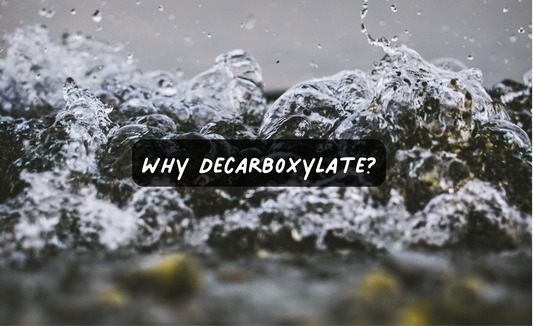Journal Contents:
- Intro
- Is Amanita muscaria a psychedelic?
- Why is defining Amanita muscaria important?
- How do psychedelics work?
- How does Amanita work?
- Is Amanita muscaria a psychedelic?
- If it isn't a psychedelic, what is it?
- Types of psychoactive substances.
- What type of substance is Amanita muscaria?
- But it feels like so much more than alcohol.
Intro
Amanita muscaria, also called the mario mushroom, or the Alice in Wonderland mushroom, has started to gain the attention of those in the psychedelic space. Like psychedelics, people using Amanita have claimed it has helped heal them from their life-long depression and anxiety. While no major studies have been undertaken to substantiate these claims, anecdotes on their healing potential continue to be posted online.

Is Amanita muscaria a Psychedelic?
Though Amanita is often called a “magic” mushroom, it is not a psychedelic.
This is because Amanita does not act on the serotonin 5HT2A receptor in the body, which gives people the classic world opening effects seen with psychedelics (like psilocybe mushrooms, LSD, mescaline and ayahuasca). This allows people to let more sensory information in and feel more connected to the world around them.
In contrast, Amanita muscaria contains a muscimol, an entirely different molecule from psychedelics which acts on the GABA neurons in the body. GABA is responsible for quieting an overactive mind and bringing balance to the body. In doing so, when you consume Amanita, you will feel relaxed and stress free, almost opposite the effects of psychedelics.Both Amanita and psychedelics are used by people to reduce depression. Some people may prefer microdosing Amanita over psychedelics, though. Those who tend to have anxiety, trouble sleeping or low self esteem may prefer Amanita. Plus Amanita seems to uplift people with a gentle, warm energy over the more "buzzy" energy that comes with psychedelics.
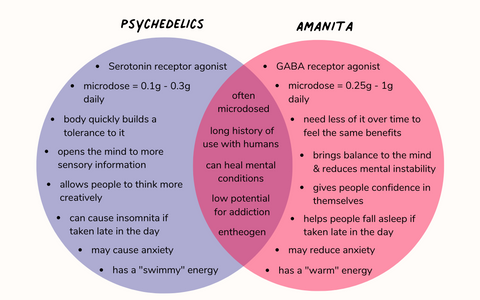
Why is defining Amanita Important?
Though defining terms can be a bit pedantic, the assumptions people make based on how something is labeled, is important. We don’t want a young person, struggling to find access to illegal psychedelics to buy a bag of amanitas online thinking they will get those same effects and have a good time.
Instead, amanita needs to be treated with respect. Much more respect than that given to many psychedelic trippers. Labeling it correctly is the first step to making sure people stay safe and amanita continues to be treated as a legal and medicinal mushroom.
How Do Psychedelics Work?
Though psychedelic is often used as a catch all term for drugs that are “consciousness altering”, their method of action is specific.
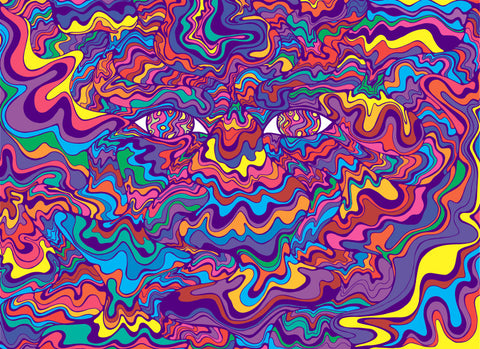
credit: RGB.wiki
Researchers in the field of psychedelics often describe them as “Serotoninergic hallucinogens”, because overall, psychedelics are shown to be agonists at the 5HT-2A serotonin receptor in the brain. No matter the psychedelic drug, they all seem to have this in common.
By activating this serotonin receptors, psychedelics allow more neurons in the brain to communicate with one another, essentially lowering people's internal filters and allowing them to experience more of the world around them. Because of this action, when you take a psychedelic, you may have: perception changes, heightened senses and emotions, and novel thought patterns.
Because psychedelics lower your brain's filters, it is perfect for altering your world view and allowing you to be more creative.
How Does Amanita Work?
In contrast to psychedelics, the healing molecule in Amanita muscaria, muscimol, acts on GABA neurons. GABA is the main inhibitory neuron in the brain, reducing the action of the central nervous system to help relax the body. GABA is also responsible for bringing balance to the brain by calming neurons that are overactive
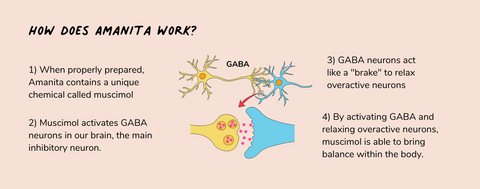
Without GABA, you would be in a constant state of anxiety, depression and sleep deprivation. Research from October, 2021, shows that low amounts of GABA makes it harder for people regulate negative emotions such as anxiety, fear and depression. For those that have mental health conditions, muscimol may be the key to healing their mind.
What does Muscimol Feel Like?
When you consume Amanita muscaria in low to medium doses, people report feeling relaxed, confident, floaty, social, and maybe even a bit sleepy (if taken before bed).
The main benefits of muscimol don't show up until you start taking it regularly, however. At which point, people often note they feel better and more optimistic about their life. Depression and anxiety disappears, they regain their ability to get deep sleep and to control their emotions.
Read: Why microdose Amanita muscaria?
So if it isn’t a psychedelic, what is it?
Before we nail down what amanita is, we first need to revisit all the various classes of drugs and how they work.
Drugs or psychoactive substances are anything that affects how the brain works and causes changes in mood, thoughts, feelings or behavior. There are many forms of drugs and they range in psychoactivity and effects from sugar to methamphetamines.
Scientists have debated over the years on how to classify psychoactive substances, but generally agree on 7 major groups. Each group is defined according to shared symptoms or pharmacological effects on the brain.
Types of Psychoactive substances:
 credit: drug and alcohol foundation
credit: drug and alcohol foundation
Narcotics
Action: Their primary method of action is on the opioid receptors, which regulate the body’s pain, reward and addictive behaviors.
Effects: They reduce pain and increase dopamine in the brain causing euphoria.
Examples: opium, heroin, vicodin and oxycotin
Empathogens
Action: Stimulates the release of serotonin and dopamine in the brain.
Effects: Empathogens create feelings of emotional openness, sociability, empathy and love. <3
Examples: MDMA, GHB and sassafras
Dissociatives
Action: NMDA antagonist. Acts on NMDA receptor and blocks the glutamate neurotransmitter from binding and firing Action Potentials.
Effects: Detachment from identity, self, actions or thoughts. Also creates feelings of being “floaty”, euphoric and reduces feelings of pain.
Examples: Ketamine, nitrous, Datura, PCP
Cannabinoids
Action: Acts on cannabinoid receptors throughout the body which effect pain, mood, appetite and immune system functions.
Effects: Relaxation, reduced nausea, anxiety, reduce pain and changes in perceptions of time.
Examples: THC and CBD
Stimulants
Action: Acts on adenosine (promotes sleep so it blocks it) or dopamine (caffeine, amphetamines, cocaine) - increase activity of CNS by increasing heart rate to speed up the body., caffeine inhibits GABA release
Effects:
Examples: Caffeine, amphetamines, cocaine
Depressants
Action: Most act on GABA receptor, which is the main inhibitory neurotransmitter which reduces the overall excitation in the brain.
Effects: Decrease activity of CNS. Helps reduce anxiety, increase propensity for sleep, and relaxes muscles. opp of glutamate (excitatory NT)
Examples: Alcohol, benzodiazapines, KAVA
Psychedelics
Action: Acts on serotonin receptors, specifically the 5-HT2A receptor, and increases the chances two neurons will fire together.
Effects: Overall it alters how you think, feel and perceive time. More specifically it increases the propensity of neurons in different parts of your brain to fire together which can intensify emotions, perceptions and mental imagery.
Examples: LSD, psilocybin, DMT, mescaline
What type of substance is Amanita muscaria?
Although Amanita is often misclassified as a psychedelic, Amanita muscaria is actually a depressant.
As a reminder, a depressant is a substance that acts on GABA neurons to reduce the activity of the central nervous system. Depressants are useful for reducing anxiety, increasing confidence, feeling relaxed and helping you fall asleep, all of which Amanita (or muscimol) does.
On the flip side, psychedelics open your mind and throw you into a world of movement and hypersensitivity. Though both are magical and medicinal molecules, psychedelics and Amanita muscaria are closer to being complete opposites than one in of the same.
And if you’ve ever felt the calming vibe of a well prepared amanita cap, you might agree that it feels much more like a glass of wine than an LSD tab.
Amanita muscaria is an entheogen depressant
But hold on, we aren't totally done. Naming Amanita a depressant may be scientifically accurate, but it misses out on one key part of the amanita muscaria experience - the mystical one. It is continually reported to make people feel spiritually connected to the universe and to make them feel as though they have a "god" given plan to live. So it's important that we add one more classification to Amanita - as an entheogen (a spirit molecule).
And thus we finally have our answer:
Amanita muscaria is a entheogen depressant - unlike any other substance on earth.

References:
- Study on low amounts of GABA: https://onlinelibrary.wiley.com/doi/10.1002/ejp.1838
- Definition of a psychoactive substance: https://www.cancer.gov/publications/dictionaries/cancer-terms/def/psychoactive-substance

